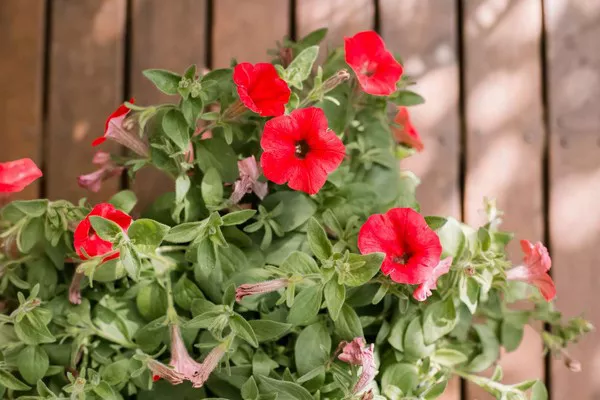Ants can become unwelcome guests in flower pots, causing damage to plants and disturbing the soil. For avid gardeners, managing ant infestations in flower pots is essential to maintain healthy plant growth and preserve the aesthetics of their gardens. This article outlines effective strategies for identifying and addressing ant problems in flower pots, including natural and chemical control methods, as well as preventative measures to keep ants at bay.
Identifying the Ant Problem
Before implementing any control measures, it’s crucial to accurately identify the type of ants infesting your flower pots. Different species of ants may require different approaches for effective control. Common signs of ant infestation in flower pots include:
1. Presence of ant trails: Ants often form visible trails as they forage for food and water. These trails may be spotted along the edges of flower pots or on the soil surface.
2. Ant nests: Ants may build nests in the soil of flower pots, particularly in warm and moist conditions. Nests can sometimes be identified by small piles of soil or debris around entry points.
3. Damage to plants: Ants may feed on plant roots or protect aphids and other pests that damage plants, leading to stunted growth or wilting foliage.
Once you’ve confirmed the presence of ants in your flower pots, you can proceed with appropriate control methods.
Natural Ant Control Methods
Natural ant control methods offer environmentally friendly solutions for managing ant infestations in flower pots. These methods focus on disrupting ant behavior and eliminating food and water sources. Some effective natural control methods include:
1. Boiling water: Pouring boiling water directly into ant nests or along ant trails can help to kill ants and disrupt their colonies. This method is best used for outdoor flower pots to avoid damaging plant roots.
2. Diatomaceous earth: Sprinkling food-grade diatomaceous earth around flower pots creates a barrier that damages the exoskeletons of ants, ultimately leading to their demise.
3. Citrus peels: Placing citrus peels, such as lemon or orange rinds, around flower pots can deter ants due to their strong scent. Replace the peels regularly to maintain effectiveness.
4. Vinegar solution: A mixture of equal parts vinegar and water sprayed onto ant trails or around flower pots can disrupt ant pheromone trails and discourage ants from returning.
While natural ant control methods are generally safe for plants and the environment, they may require repeated applications for effective results.
Chemical Ant Control Methods
In cases of severe ant infestations or when natural methods prove ineffective, chemical ant control methods can provide more immediate relief. It’s important to exercise caution when using chemical pesticides, especially in flower pots with edible plants or in areas frequented by children or pets. Some commonly used chemical ant control methods include:
1. Ant baits: Commercial ant baits containing insecticides are designed to attract ants, which then carry the poisoned bait back to their colonies, effectively eliminating the entire population.
2. Insecticidal sprays: Aerosol insecticides formulated specifically for ants can be applied directly onto ant trails or around flower pots to kill ants on contact.
3. Granular insecticides: Granular insecticides can be sprinkled onto the soil surface of flower pots and watered in to control ant populations in the soil. Follow the manufacturer’s instructions carefully when applying granular insecticides.
When using chemical ant control methods, always read and follow the instructions on the product label to ensure safe and effective application.
Preventative Measures
Preventing ant infestations in flower pots is often more manageable than addressing existing problems. Incorporating preventative measures into your gardening routine can help minimize the risk of future ant infestations. Consider the following preventative measures:
1. Keep flower pots clean: Remove fallen leaves, dead plant material, and other debris from flower pots regularly to eliminate potential food sources for ants.
2. Seal entry points: Inspect flower pots for cracks, gaps, or holes that may serve as entry points for ants. Seal any openings with caulk or silicone to prevent ant infiltration.
3. Elevate flower pots: Place flower pots on stands or saucers filled with water to create a barrier that ants cannot easily cross. Alternatively, apply a thin layer of petroleum jelly around the base of flower pots to deter crawling insects.
4. Monitor plant health: Vigilantly monitor the health of plants in flower pots for signs of ant activity or damage. Early detection allows for prompt intervention before ant infestations become severe.
By implementing these preventative measures, you can help maintain a pest-free environment for your plants and enjoy a thriving garden throughout the growing season.
Conclusion
Ant infestations in flower pots can pose significant challenges for gardeners, but with the right strategies, they can be effectively managed. By accurately identifying the ant problem, utilizing natural and chemical control methods when necessary, and implementing preventative measures, gardeners can keep ants at bay and maintain healthy plants in their flower pots. Whether you prefer eco-friendly solutions or more potent chemical treatments, there are options available to suit your needs and preferences. With diligence and proactive management, you can enjoy a vibrant and pest-free garden year-round.


